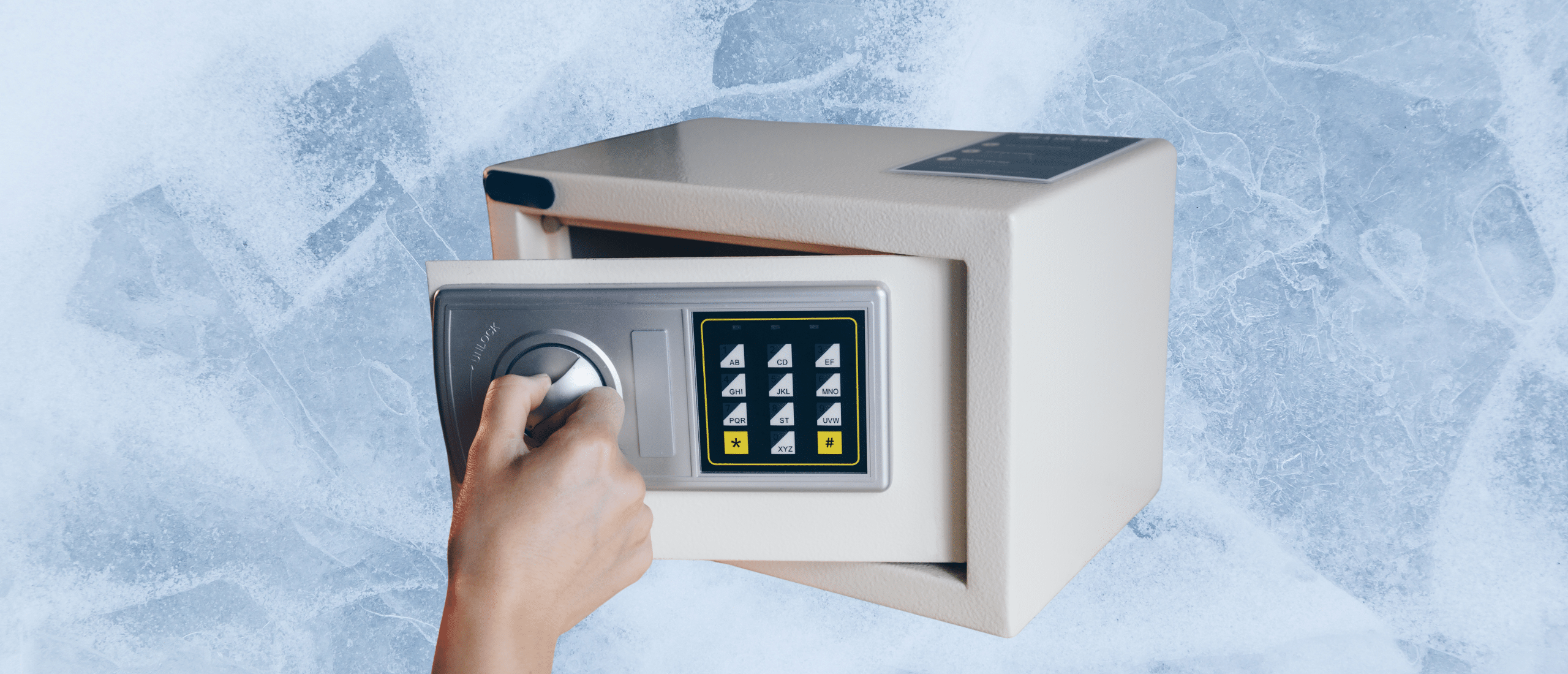All Men Should Consider Sperm Freezing. Here’s Why.
After hot coffee spilled on his lap left him with second degree burns, Legacy CEO Khaled Kteily decided it was time to preserve his sperm. It was, he says, “the most awkward, clinical, dehumanizing, weird experience of [his] life.”
On the Hone In podcast with CEO Saad Alam, Kteily described his experience, which mirrors the sperm freezing process most men have if they go to a clinic. He made an appointment, had 10 minutes alone to masturbate into a cup, and, for his trouble, was presented with a results paper a few weeks later that “looked like I was faxed a bunch of numbers.”
“It was something so important, yet so awkward, and that really set me down the path of starting Legacy.”
Icing your sperm, whether via a clinic or at home is a personal decision. What’s important to know is: you have options.
Sperm rates are declining, but your fertility doesn’t have to suffer. Learn more on the Hone In podcast.
How Does Sperm Freezing Work?
Sperm freezing involves a few steps. The first is to get a blood test to check for sexually transmitted infections (STIs), which can damage sperm health.
Then comes the money shot: collecting a sample. Masturbating at fertility clinics usually mirrors Kteily’s experience, with time limits, dogeared magazines, and a private but sterile mood.
Or, you can go through an at-home cryobank like Legacy, and collect your sample at home, then send it off to the lab for analysis.
Lab techs (they’re called Sperm Spinners at Legacy) conduct a full semen analysis to check sperm motility (i.e. are your sperm actually swimming) and morphology (the correct size and shape).
If your swimmers are healthy, they’ll be locked up in cryostorage until you need them. Typically, scientists add a cryoprotectant to prevent cold damage before plunging sperm into liquid nitrogen at a brisk -196 degrees Celsius. Wim Hof would be proud.
When you’re ready to use your sperm, you can request to withdraw your vials and have them sent to a fertility clinic of your choice. If you’re using Legacy, it takes about two weeks for your sample to be delivered to your doctor. Then your provider will help you choose between conception options like intrauterine insemination (IUI), in vitro fertilization (IVF), or IVF with intracytoplasmic sperm injection.
Why Should You Freeze Your Sperm?
Sperm quality declines with age
Celebrities like Robert De Niro are still having kids at 79. But that doesn’t mean impregnating your partner will be easy if you wait to have kids.
Sperm quality peaks around age 30 to 35, and starts to rapidly decline after 40, according to the Centers for Disease Control and Prevention (CDC). This dip makes it harder to get your partner pregnant, and could also affect the health of your offspring.
“We think that men don’t have to worry about all of the stuff because we’re just going around, you know, popping sperm off left, right and center. But the reality is quite different,” Kteily told Alam. “Advanced paternal age, which is older dads, is associated with higher rates of infertility, higher rates of miscarriage, and just not being able to conceive with your partner for so much longer.”
Global sperm levels are dropping—fast
Global sperm counts have declined over 60 percent in the past 50 years (1)—a trend that doesn’t appear to be stopping anytime soon.
Chemicals like BPAs and phthalates, which are found in common household items like laundry detergent, may be slashing sperm counts, according to a review published in 2022 in the American Journal of Men’s Health (2). Studies on mice also found a potential link between long-term microplastic exposure and reduced testosterone levels and sexual dysfunction (3).
“There is no question about the trend line, and whether sperm counts are going down. This is affecting people’s ability to have kids,” Kteily says, pointing to evidence that suggests that the prevalence of microplastics like BPAs and phthalates could play a role.
You want to start TRT
Testosterone replacement therapy can boost your sex life by increasing libido and endurance, but TRT can hamper fertility (4).
“When you think about it, you think about testosterone and vitality, and how it makes you feel, you would assume that [TRT will] increase your sperm count and quality,” says Alam. “The reality is the total opposite.”
When you detect a decline in testosterone levels, it signals the pituitary gland to release two hormones: luteinizing hormone (LH) and follicle stimulating hormone (FSH). This sends your testes a signal to start making sperm.
When you start TRT, this process gets disrupted. Your brain senses an abundance of testosterone and no longer sends the signals that start the chain of events needed to make sperm.
If you plan on having kids, it’s a good idea to bank your sperm before starting TRT.
Hone’s at-home testosterone assessment is the simplest way to uncover whether your levels are low. If you qualify for treatment, TRT can be sent right to your door.
How Much Does Sperm Freezing Cost?
Initial costs for sperm collection and freezing can total $1000, but storage can cost anywhere from $100 to $500 dollars each year, according to John Hopkins Medicine. If you have fertility coverage as part of your employee benefits, you may be able to cover some or all of the collection and storage costs.
Legacy provides three options for guys looking to start the sperm freezing process.
For Today: Semen analysis, 4 vials, and one year of storage ($440)
For Tomorrow: Semen analysis, STI test, 8 vials, and five years of storage ($995)
Forever: Semen analysis, STI test, 12 vials, lifetime storage, 1 DNA fragmentation analysis ($3,995)
References
-
Levine, et al (2022). Temporal trends in sperm count: a systematic review and meta-regression analysis of samples collected globally in the 20th and 21st centuries.
-
Zhang, et al (2022). Microplastics May Be a Significant Cause of Male Infertility.
-
Jin, et al (2022). Chronic exposure to polystyrene microplastics induced male reproductive toxicity and decreased testosterone levels via the LH-mediated LHR/cAMP/PKA/StAR pathway.
-
Patel, et al (2019). Testosterone Is a Contraceptive and Should Not Be Used in Men Who Desire Fertility.












